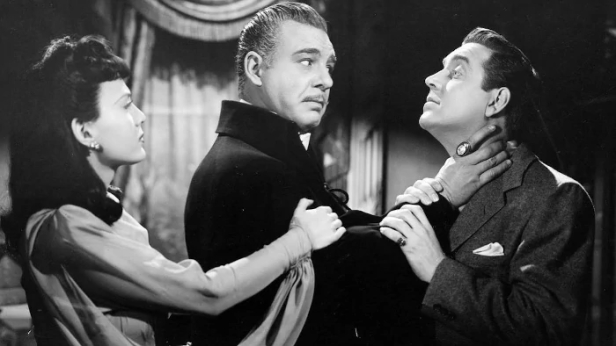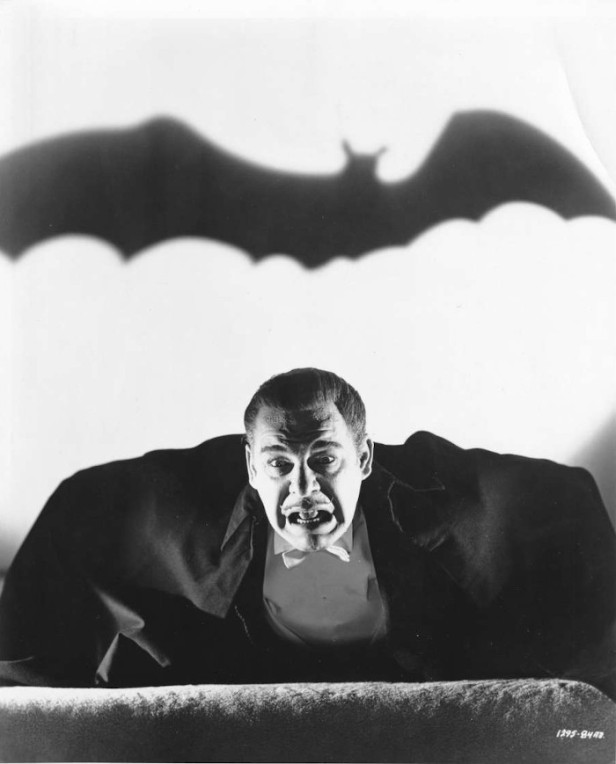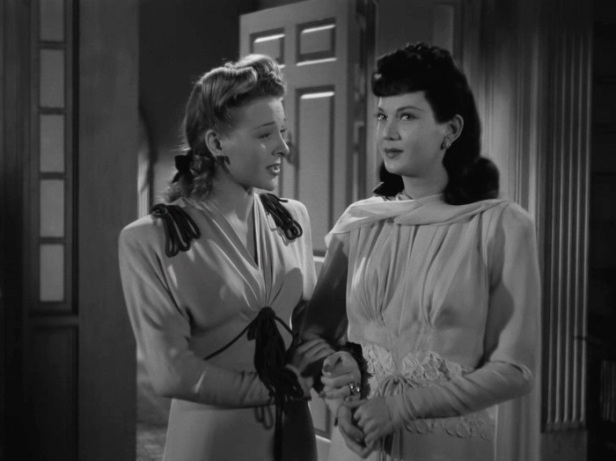Universal headed into the Deep South for a spot of admittedly watered-down Southern Gothic with the third film in their Dracula series. Having already met his daughter in 1936, here we’re introduced to… well in fair, it’s not entirely clear who Lon Chaney Jr’s bloodsucker is actually meant to be. Eric Taylor’s script keeps changing its mind, referring to him variously as Dracula, his son or someone else entirely. The confusion prevents the film from making it to the top tier of Universal horrors but it’s still a rather good film, intelligent, grim and smartly directed by Robert Siodmak.
The mysterious Count Alucard (a transparent anagram that people need to point out here as unsubtly as Peter Cushing’ Van Helsing would later do in Dracula A.D. 1972 (1972)) arrives in New Orleans, apparently at the invitation of Katherine Caldwell (Louise Allbritton), one of the daughters of plantation owner Colonel Caldwell (George Irving). The Colonel dies of an apparent heart attack, leaving his wealth to his two daughters, Claire (Evelyn Ankers, fast becoming a regular in the Universal horrors) taking all the money and Katherine the estate, Dark Oaks. Katherine starts acting strangely, quickly marrying Alucard after a whirlwind secret romance to the dismay of long-time boyfriend Frank Stanley (Robert Paige). Town medic Dr Brewster (Frank Craven) calls on the help of Hungarian Professor Lazlo (J. Edward Bromberg), an expert in vampirism, who suspects that Alucard may be one of the undead while Katherine admits to Frank’s that she only married Alucard so that he would make her immortal – Frank is the one she really loves and wants to make him a vampire too.

The Alucard/Dracula business is dealt with early on (though people keep on pointing out that Alucard is Dracula spelled backwards), rather robbing the film of some of its suspense – but as it never makes its mind up who Alucard is meant to be, perhaps that doesn’t matter anyway. The fact that the script never quite gets to grips with who Alucard really is allows a degree of wiggle room for those not sure about the casting of Chaney in the lead role. If he’s Dracula, as some characters insist, then Chaney might be seen as a bit of a disappointment, but if he’s just another vampire then he works rather well, physically imposing and quietly menacing but able to turn on the violence when required. There are references to Dracula having died in the 19th century, suggesting that the film may not be a sequel to the 1931 film (which was set in the contemporary world) at all, but perhaps is a sequel to the novel, which Brewster is seen reading at one point.
One of the most interesting aspects of Taylor’s script is the notion that Alucard, for all his macho posturing and menace, is actually being stalked and manipulated by a mortal woman rather than the other way around. It’s all part and parcel of Taylor’s attempts to provide a more adult script than was being assigned to Universal horrors by 1943, mixing and matching elements of film noir, traditional Gothic and Southern Gothic into a witty and clever script which may fudge the Alucard identity issue, but which is far netter than it’s often given credit for. The result is one of the more intriguing and satisfying of Universal’s 1940s crop of horrors.

The film features the first on-screen man-to-bat-and-back-again transformation, realised through an odd animation technique that lends the film a few seconds of bizarre surrealism. Director Robert Siodmak (Curt’s brother), later well-known for his films noir, peppers the film with several notable scenes likes this – there’s an eerie shot of Alucard’s coffin rising to the surface of a swamp and Alucard materialises on a cloud of smoke before drifting almost serenely towards an expectant Kay. Later, there’s a clever bit of business with Frank trying to shoot Alucard, the bullet passing harmlessly through him to apparently kill Kay. And at the climax, Alucard perishes in the swamp, one pathetic hand clutching a tree root before disintegrating into a bony claw, accompanied by the theme from the Sherlock Holmes films which had only just transferred over to Universal from Twentieth Century-Fox, Sherlock Holmes and the Voice of Terror having been released just a month before Son of Dracula.
It could, perhaps, have done with some actual New Orleans location footage for local colour, though the Universal horrors rarely strayed far from their studios or the backlot. But otherwise, Son of Dracula is a fine film, moodily shot and directed with a rousing score culled from stock cues and in Chaney an under-rated “Dracula” or whoever he might be. It runs out of steam in the mid-section but rallies commendably at the climax and as a climax to the main run of Universal Dracula films. it may be the lesser of the three but it’s still a commendable way to end things.

Though it wasn’t quite the end for Dracula at Universal. What followed wouldn’t really form part of the main series of films any more than they would the Frankenstein films, but John Carradine donned the cape (and a top hat) for House of Frankenstein (1944) and House of Dracula (1945), before handing the role back to Bela Lugosi who played the Count one last time for Universal in the film that effectively ended their Gothic horror line, Abbott and Costello Meet Frankenstein (1948).